A Gift to Pittsburgh (1893 – 1930)
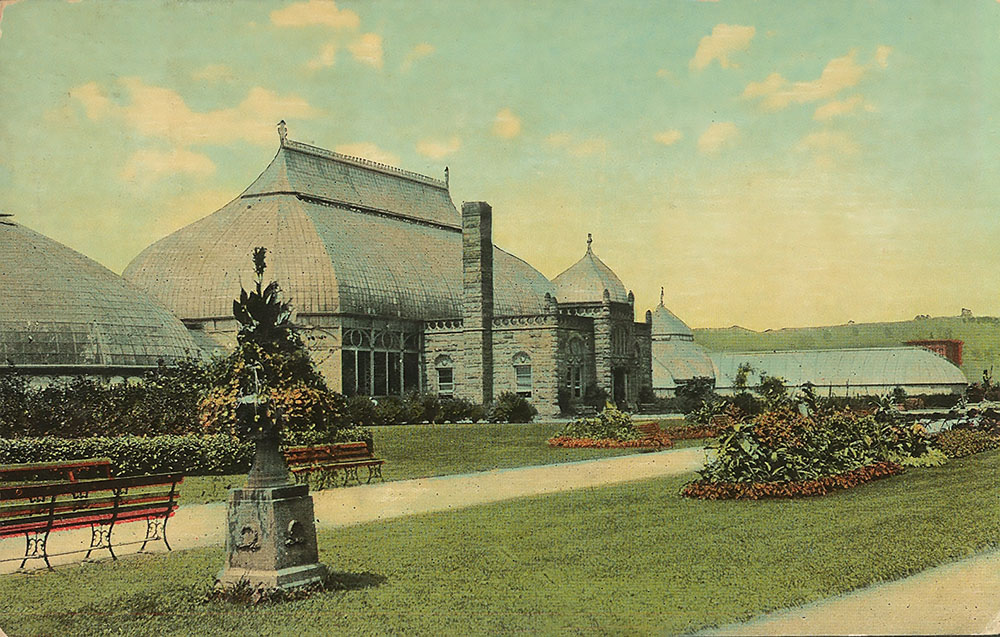
Phipps Conservatory circa 1893 – 1895
Phipps Conservatory was presented as a gift to the City of Pittsburgh from philanthropist Henry W. Phipps, who wished to "erect something that [would] prove a source of instruction as well as pleasure to the people." In a letter to City of Pittsburgh Mayor H.I. Gourley in November 1891, Phipps expressed his intentions to add this new conservatory as a complement to an already existing “Phipps Conservatory” built in 1887 in Allegheny, now known as the North Side. Henry Phipps stipulated that both conservatories operate on Sundays in order to allow the working people to visit on their day of rest.1
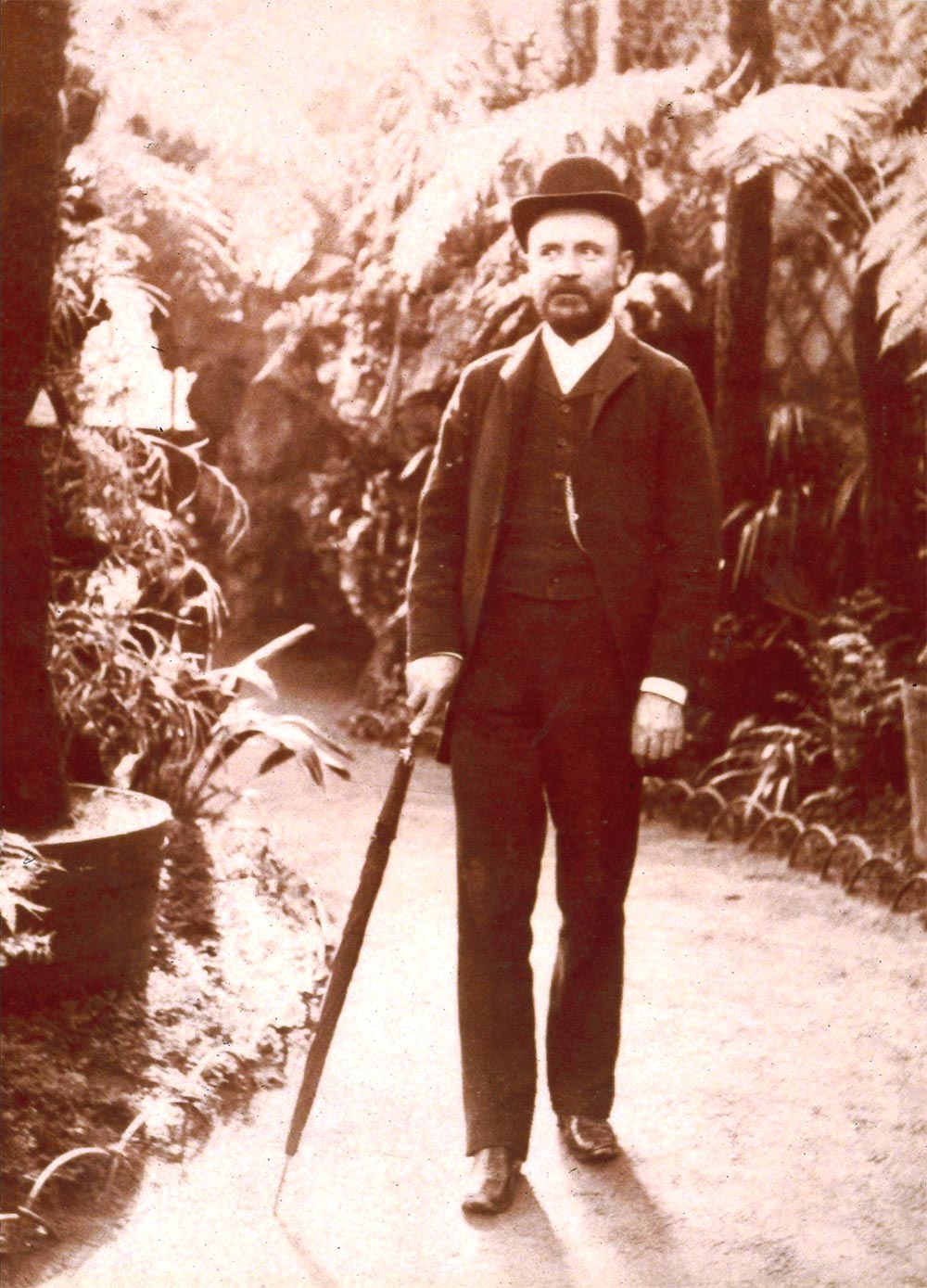
Henry Phipps enjoying the Conservatory
The iconic Victorian-style glasshouse was designed by New York-based greenhouse manufacturer Lord & Burnham for a fee of $100,000 and was completed in August 1893, one year after construction began. It featured nine display rooms and waist-high benches for austere potted plant exhibits.
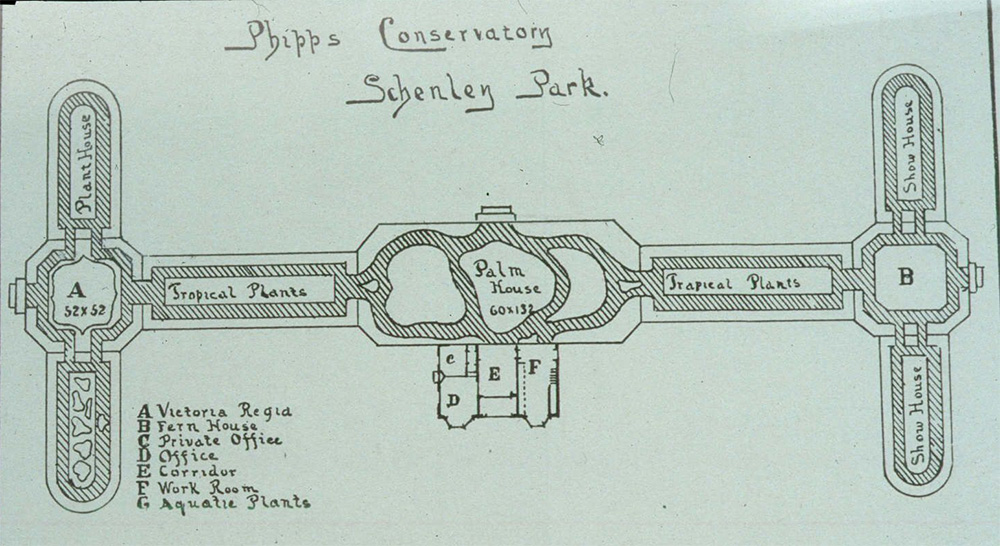
On Dec. 7, 1893, Phipps Conservatory opened to the public. It showcased over 6,000 exotic plants originating from the World's Columbian Exposition in Chicago — cacti, trees, ferns and more made the journey by train and horse-drawn cart to Pittsburgh and the nation’s newest and largest conservatory. On opening day, Henry Phipps presented a white marble kneeling Venus statue to the Conservatory which can still be found today in Palm Court.2
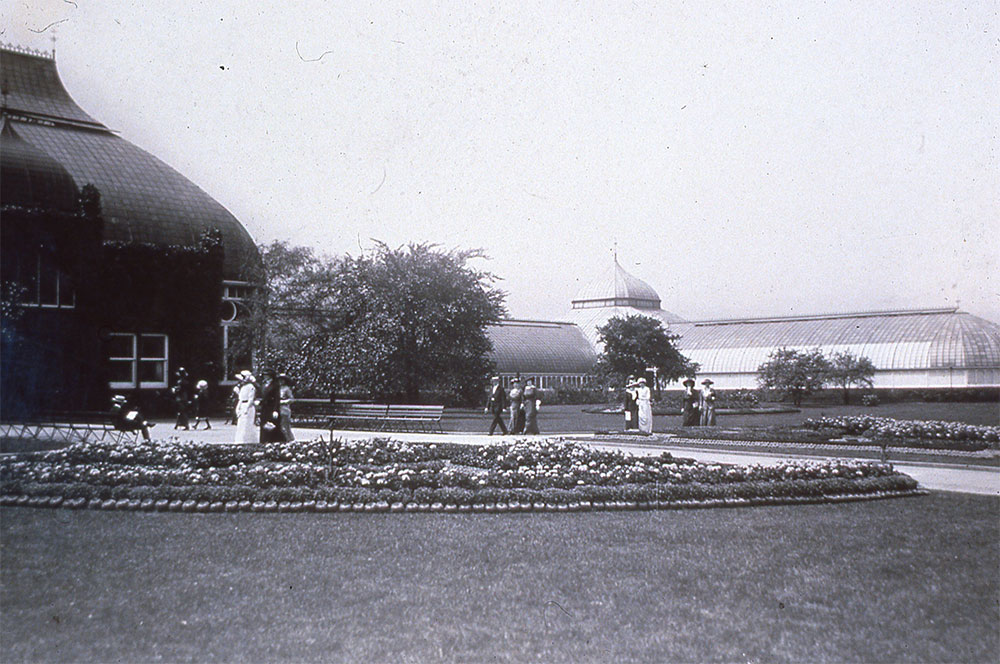
Visitors arrive to Phipps Conservatory
During the Conservatory’s first year of operation, Augustus W. Bennett was appointed superintendent of Phipps, and John Wynn Jones was hired as an assistant before rising to manager. Jones served as manager of Phipps Conservatory for 30 years and was known for his Spring and Fall Flower Shows, especially his work with chrysanthemums.
An illuminating development at Phipps Conservatory came when arc lights were installed during Fall Flower Show of 1894; 30 electric lanterns lit the Conservatory for the first time and made the display of 12,000 chrysanthemums all the more dazzling. The installation cost $10,000 and was overseen by G.B. Shane of Electric Light Company and Director of Public Works Edward Bigelow. The new electric lights allowed the public to enjoy the splendor until 9 p.m.3
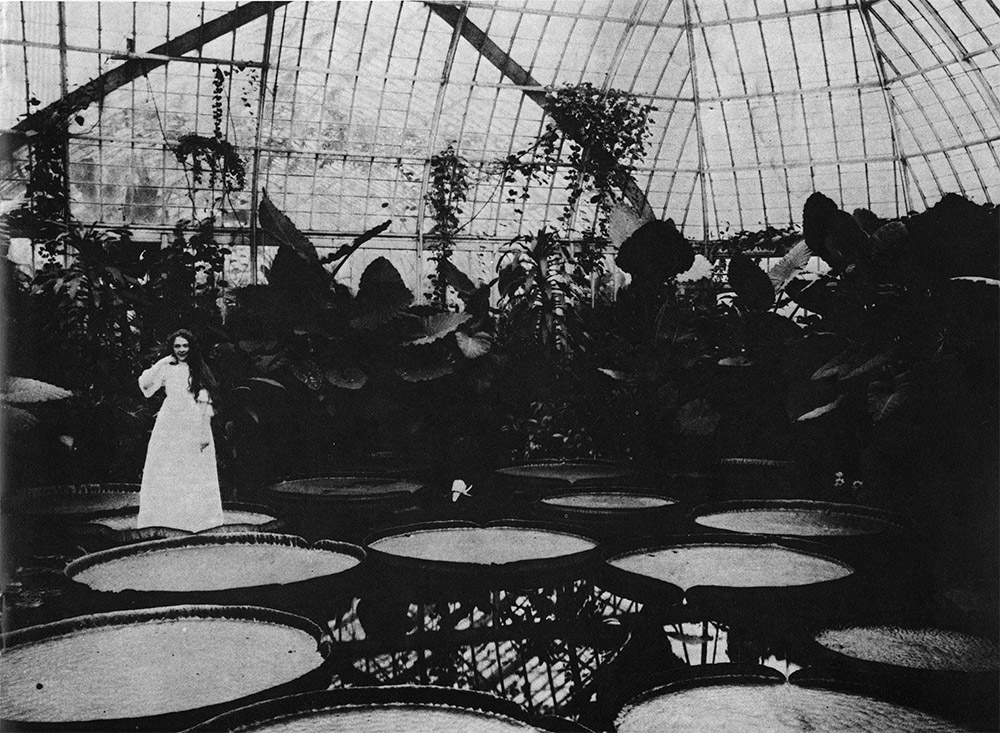
Triennial Conclave of the Knights Templar, 1895
1895 saw the first major expansions for Phipps Conservatory as the propagation greenhouses and South Conservatory were constructed. The glasshouse was now well-known for its displays of chrysanthemums in autumn and lilies, hyacinths and tulips in spring. Thousands of Pittsburghers spent their Sundays visiting the Schenley Park glasshouse to view vibrant blooms. In 1895, the City of Pittsburgh paid for 11 steam-heated propagating houses at the rear of the Conservatory. Lord & Burnham designed this newest addition: Nine of the houses were 13 feet high, 158 feet long and 18 feet wide. Two of the propagation houses were slightly smaller at 11 feet high and approximately 100 feet long. The cost was $35,000.4
A second large expansion took place for the Conservatory itself, with the construction of what is now known as the South Conservatory (home of the popular annual Garden Railroad). In 1895, a second contract was signed with Lord &Burnham for a $30,000 large room to be added onto the Conservatory, with the room being divided into one central area now known as the South Conservatory, and a smaller area on each side — now the Gallery Room and Tropical Fruit and Spice Room. Construction of this addition began in 1896.5
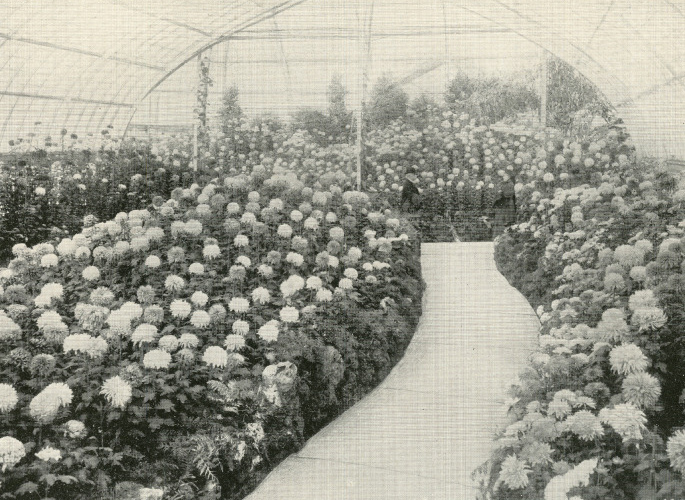
Fall Flower Show, 1897
A change of management for Phipps Conservatory occurred for the first time in 1896. Superintendent Bennett passed away on Jan. 16, 1896 at the age of 31, leaving behind a short but defining legacy of beautiful flower shows that had attracted thousands of guests from Pittsburgh and beyond.6
William Falconer, a personal friend of Director of Public Works Edward Bigelow, was brought to Pittsburgh from New York City to fill the position. As a graduate of the Royal Botanic Gardens, Kew in England, Falconer took advantage of his international alumni network to bring plants to Phipps from all corners of the world. These economic and foreign plants filled the three wings of the new annex completed in 1896.7,8
Falconer held this position for seven years, until 1903. His acquisitions of exotic plants drew guests numbering in the tens of thousands on Sundays, with weekdays seeing “one long stream of visitors from opening until closing time.” Guests viewed 60 varieties of palms, 100 types of ferns and 200 types of cacti among the total of over 10,000 plants at Phipps.9 Falconer’s intensive collection work led to Phipps being one of the only botanical gardens in the world at the time to host a collection of Jamaican tree ferns.10
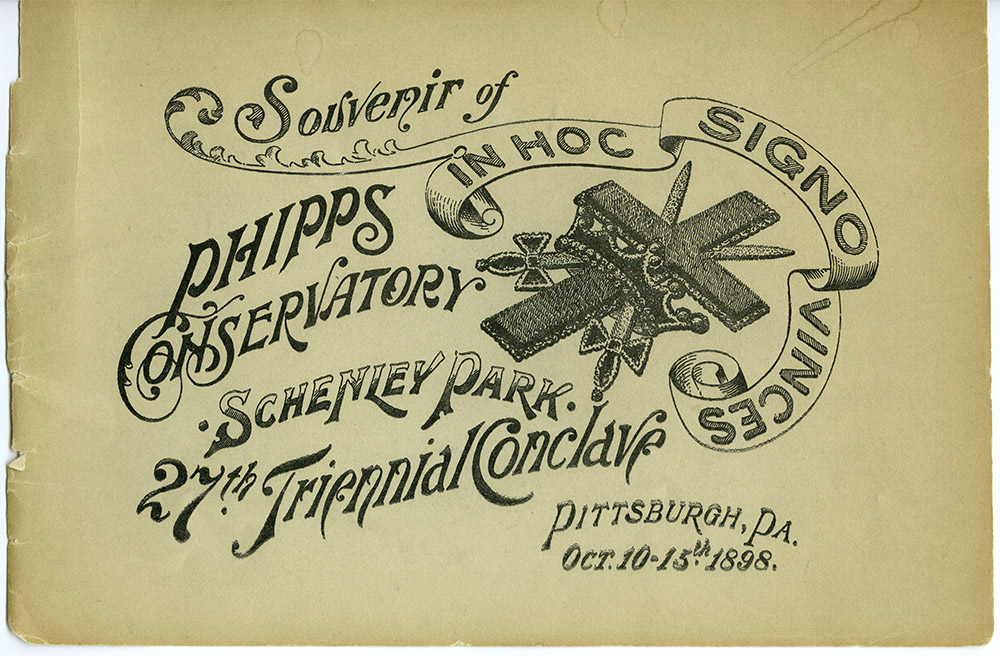
In October 1898, the 27th Triennial Conclave of the Knights Templar was held in Pittsburgh. Horticulture staff decorated the Conservatory with flowerbeds designed as Masonic emblems for the Conclave’s visit on Oct. 13 as throngs of visitors toured the city by trolley throughout the day.11
In 1899, the first iteration of a visitor center began construction at Phipps. A former potting room was converted into a carpeted and furnished waiting room and lavatory for guests to refresh themselves at the end of their walk through the glasshouses.12
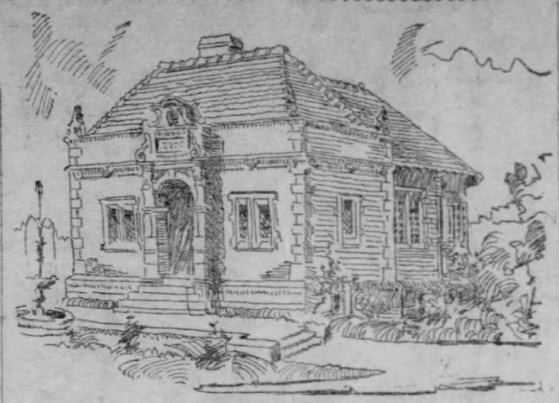 14
14
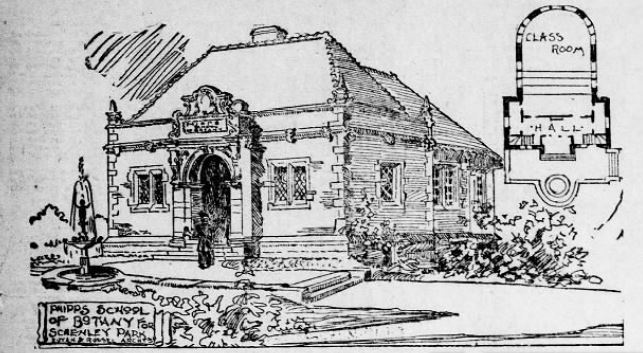 13
13
Initial sketches of Botany Hall
In June 1900, Phipps announced that a gift from founder Henry Phipps would provide the campus with a rustic building designed for use by public school teachers for their botany classes. This $30,000 gift was Botany Hall: A Roman-style brick building featuring Cleveland sandstone, Pompeiian-style brick and Spanish red tile roofing, to be located on the east side of the Conservatory and designed by architects Rutan & Russell.13 Henry Phipps was inspired to create Botany Hall by a suggestion from Pittsburgh Central High School biology teacher Annie M. Deens; Annie frequently brought her class of 40 students to Phipps to study plant life but had difficulty providing demonstrations in the glasshouses.14 Henry Phipps gathered a number of local educators to collaborate on the design of Botany Hall. A committee of local superintendents, professors and high school teachers met at Phipps Conservatory to refine the layout and furnishings before construction began in December 1900.15 Construction of the new Botany Hall completed in 1902 and opened with some fanfare from local high school students.
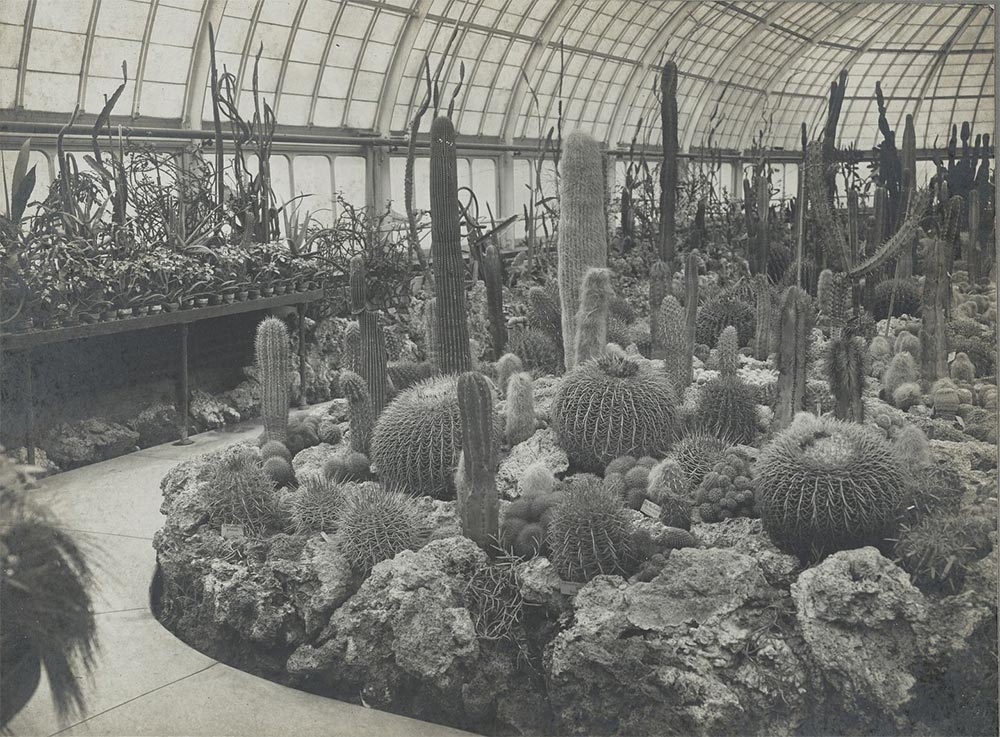 16
16
Desert Room, 1903
1902 also saw the debut of Phipps' “cacti house” and with it, the acquisition of a variety of rare specimens which elevated the Conservatory to the honor of having the most notable collection in the world. The most exciting acquisition was the Agave sebastiana, also known as a century plant — and a similar striking giant can still be found today in the Desert Room.16
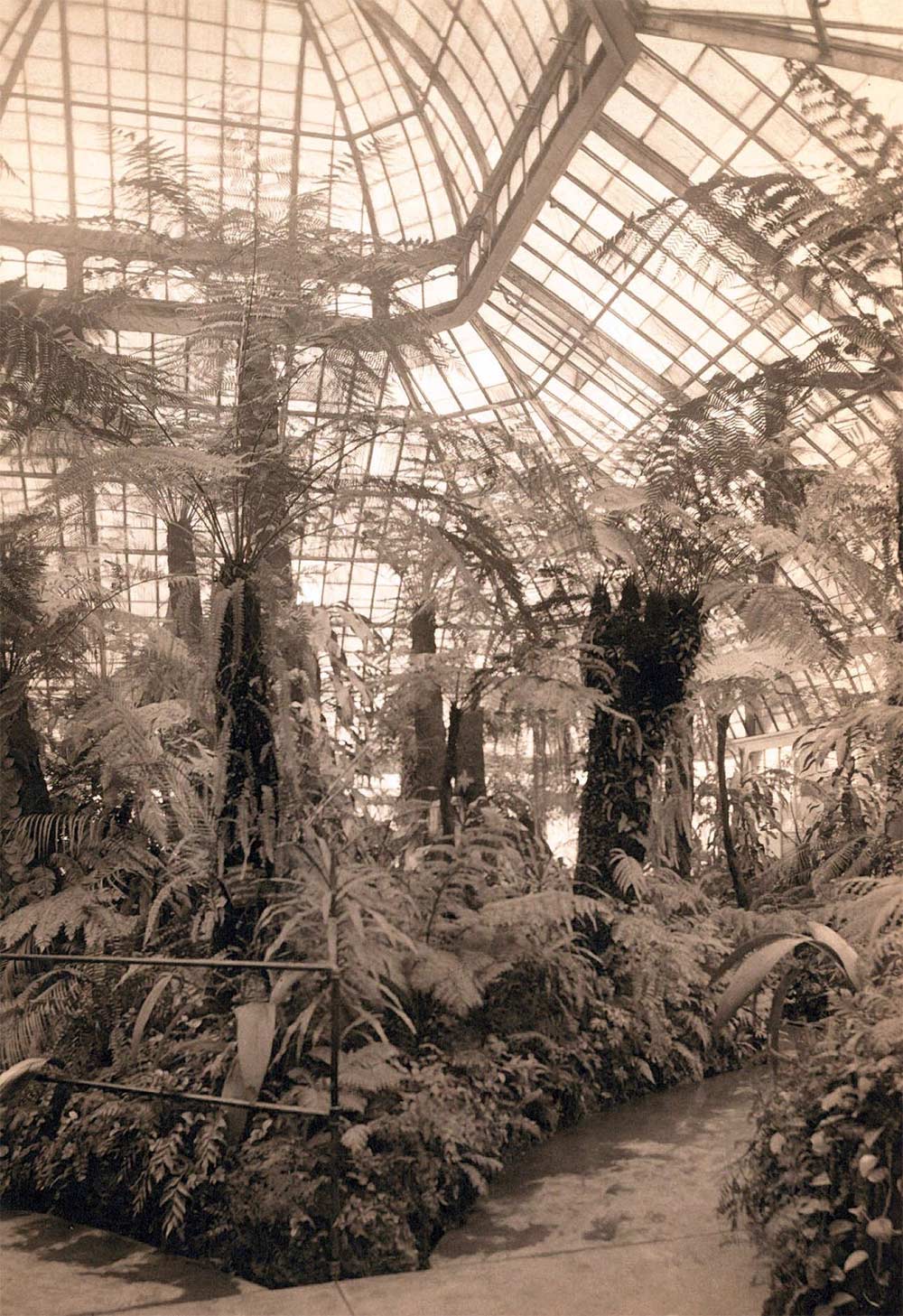 17
17
The early 1900s also saw a change of Phipps leadership. George W. Burke was named superintendent of the Bureau of Parks in 1903 and he held the position with remarkable productivity until his passing in 1926. Burke facilitated the acquisition of picnic shelters, tennis courts, new roads and other facilities for Pittsburgh’s parks; in Schenley Park, Burke established a golf course and oversaw the development of the tufa bridges in Panther Hollow.
A milestone for the City of Pittsburgh brought its two Phipps Conservatories into one city: The cities of Allegheny and Pittsburgh merged in 1907 as a result of a referendum, giving Pittsburgh a population of 521,000 to become the sixth largest city in the United States — and the only city with the distinction of having two plant conservatories.
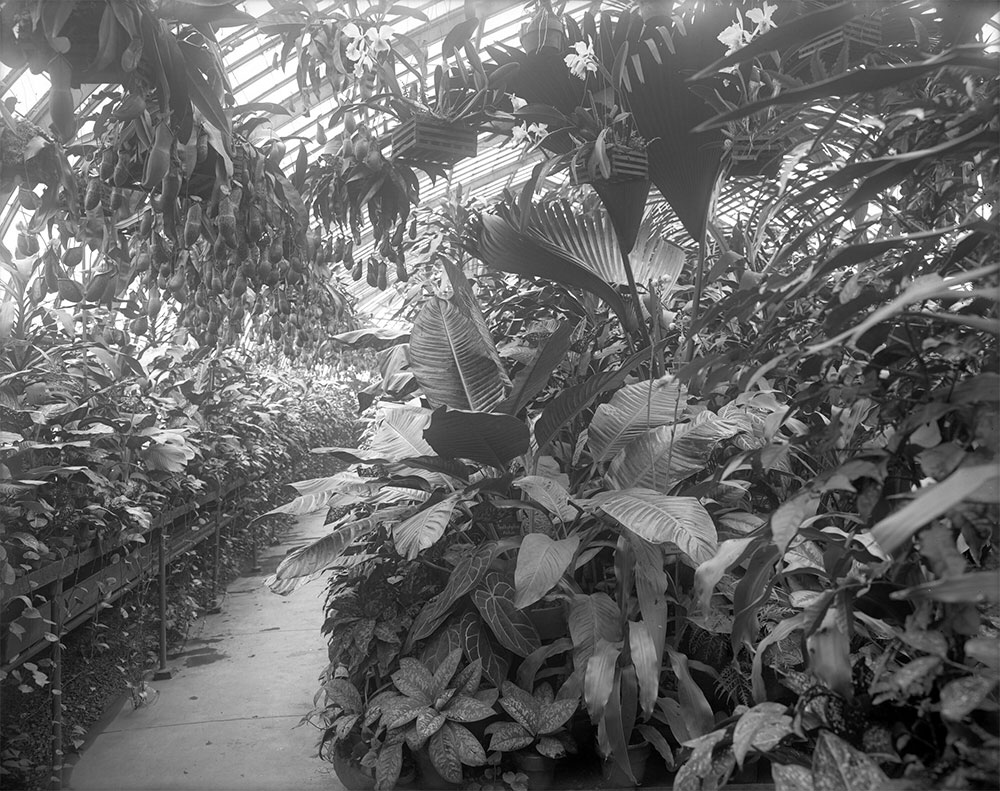
Phipps continued to grow, expanding its exotic plants collection with the March 1908 donation of camellia bulbs from West Central Africa by Ida Vera Simonton. These bulbs bloomed in May 1908, displaying flowers “similar to the amaryllis” and named “jungle lilies.”18,19 Its long-standing reputation for producing stunning chrysanthemum blooms had now begun to attract guests from all corners of the world; in November of 1909, a party of 58 Japanese industrial commissioners touring the United States traveled to Phipps to view the Fall Flower Show and compare with their native Japanese blooms.20
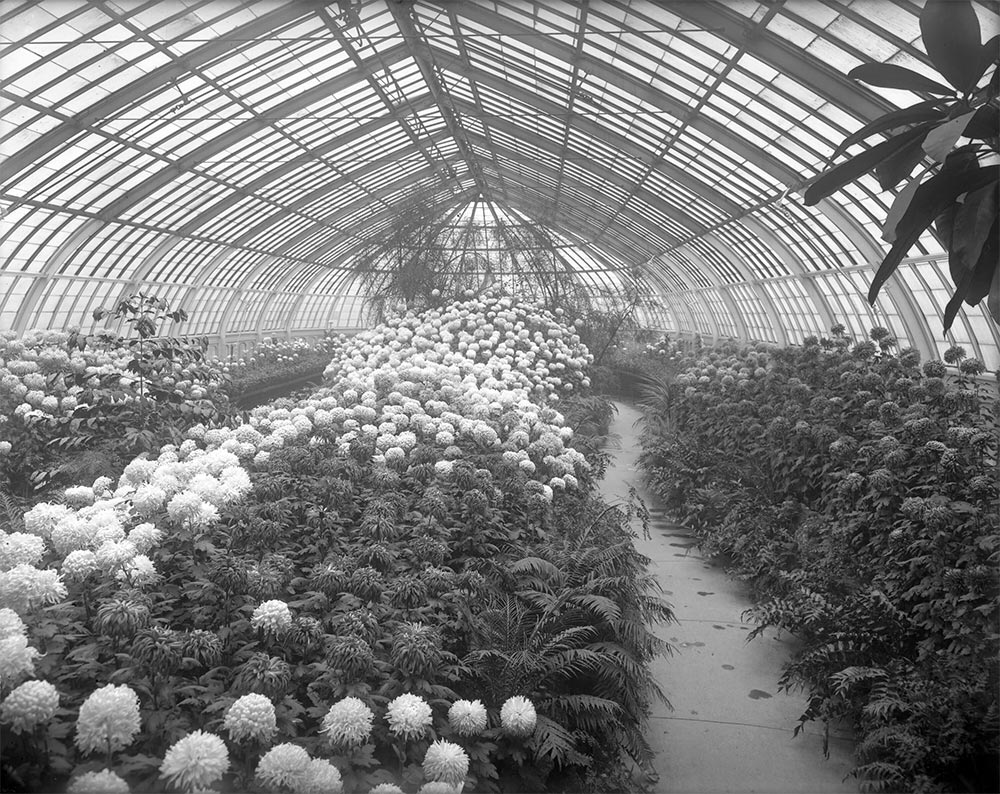 21
21
Phipps continued into the decade of 1910 with its commitment to providing entertainment and education for all who visited. In September 1911, the Agave sisalana first acquired by Superintendent Falconer for the cacti house had reached its “bloom of death” stage, producing a 25-foot stalk that Conservatory Foreman Jones carefully wrapped around the domed glass ceiling. Visitors flocked to see this rare spectacle before the plant withered.21 Spring Flower Show of 1913 saw the introduction of a children’s garden in what is now the South Conservatory, featuring bright and fragrant lilacs and sweet peas as well as caged birds and rabbits.22 Phipps assisted in honoring Pittsburgh’s military veterans on May 18, 1914 with the installation of a sundial commemorating the Pittsburgh Blues, a local company who served in the War of 1812. The sundial was installed on the Conservatory grounds with the Washington Infantry present in historical uniforms.23
By the mid-1910s, Phipps drew thousands of guests from throughout Pennsylvania via special round-trip train tickets for Pittsburgh outings from Altoona, Indiana, York, Harrisburg and other cities.24 Visitors in April 1917 enjoyed perhaps the first iteration of what would one day become today’s beloved Garden Railroad: An intricate miniature baseball field complete with players and spectators.25 The Garden Railroad’s intricate, miniature scenes of today span the entire South Conservatory with exciting animations and sounds — and it may have all started with this display.
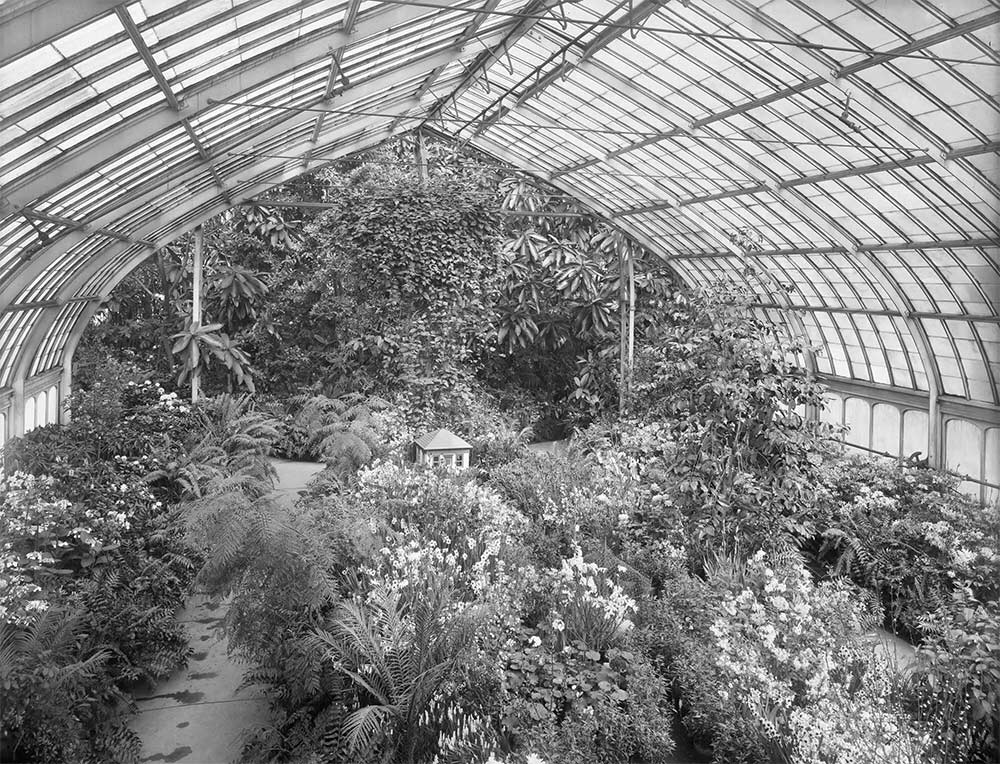 26
26
The 1920s brought significant personnel changes to Phipps. In 1923, Conservatory Foreman Jones passed away at age 64, leaving behind a 30-year career highlighted by stunning Fall Flower Shows and whimsical Spring Flower Show displays. Jones had worked at Phipps since its opening in 1893 and had pioneered the use of props in flower shows.26 Phipps management changed in 1926 when Superintendent Burke passed away and James Moore stepped into the position. Moore had progressed in civic employment for 27 years before becoming superintendent of Parks.27
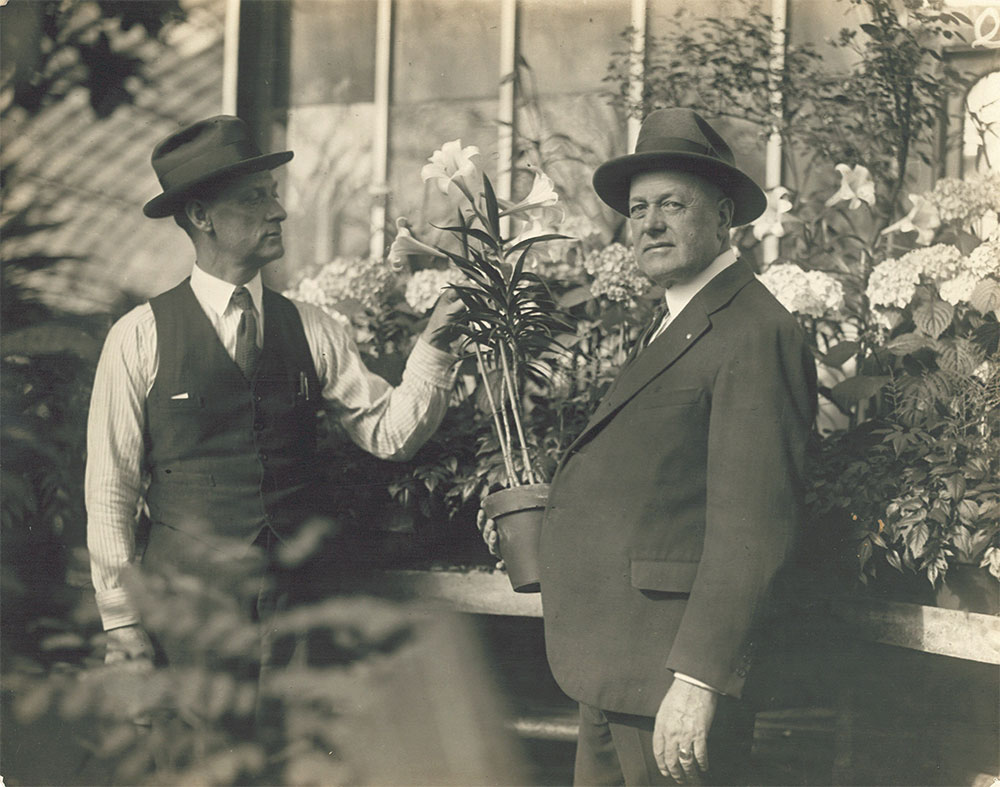
In September 1929, over 100 tanks of fish from private collectors and members of the Allegheny Aquarists Association were placed on display in today’s Victoria Room for a special exhibition called Fish at Phipps.28 On the Sunday of the exhibit’s debut, a committee judged the fish for coloring, size and perfectness. Winners received ribbons or cups, and proud owners stood by to discuss their fish with curious visitors.29
Henry Phipps passed away in September 1930 at the age of 91. The Conservatory was noted in news publications as a crowning achievement in Phipps’ rich life of business advancement and generous charity.30 Phipps Conservatory was now under the management of its third superintendent and attracted guests from the far reaches of Pennsylvania and the United States. Henry Phipps’ mission to provide “instruction and pleasure to the people” would guide our Conservatory into its evolving future.
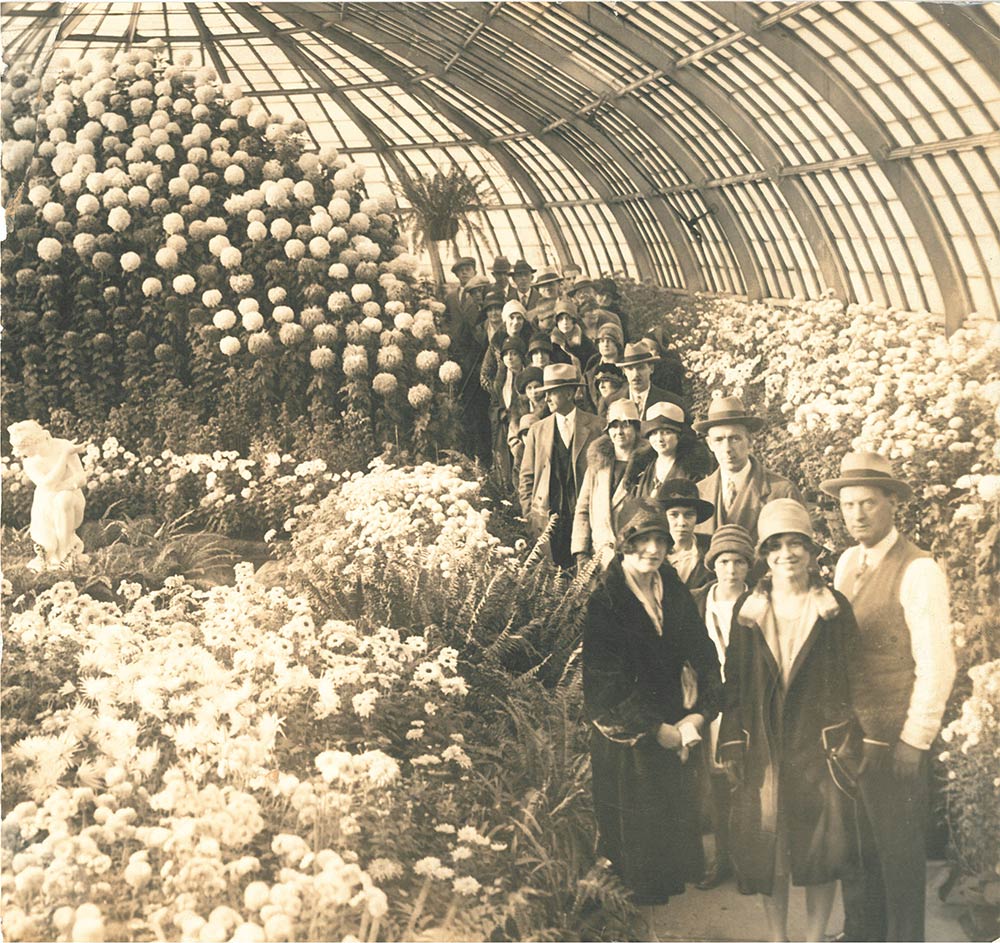
Fall Flower Show, 1929
Citations
1. “With No Conditions – Mr. Phipps’ Munificent Offer is Made to the City.” The Pittsburgh Press 8, no. 320 (1891): 1. Newspapers.com.
2. “Rare Plants at Pittsburg.” The Inter Ocean 12, no. 266 (1893): 35. Newspapers.com.
3. “The Big Flowers. Thousands View the Chrysanthemums – The Conservatory is to Be Illuminated at Night.” The Pittsburgh Post-Gazette 78 (1984): 1. Newspapers.com.
4. “Public Flower Shows. – Easter Exhibitions of Floral Beauty to Be Made in Both Cities To-Day.” The Pittsburgh Daily Post (1895): 5. Newspapers.com.
5. “New Park Plans. – Floral Palace Enlargement.” The Pittsburgh Post-Gazette 192(1985): 1. Newspapers.com.
6. “Supt. A.W. Bennett Dead. – Typhoid Fever Causes His Demise Shortly After Midnight.” The Pittsburgh Press 13, no. 15 (1896): 5. Newspapers.com.
7. “Has Appealed to Kew Society. – Famous Florists from Every Corner of the Globe Will Aid Falconer.” The Pittsburgh Daily Post (1897): 3. Newspapers.com.
8. “Admitted to Be the Greatest. – America’s Foremost Florist Says Pittsburg Easily Leads Other Cities.” The Pittsburgh Daily Post (1897): 2. Newspapers.com.
9. “Education in Flowers. – A Splendid Chrysanthemum Display in the Allegheny Conservatories.” The Pittsburgh Press 14, no. 308 (1897): 11. Newspapers.com.
10. “More Tree Ferns. – Phipps Conservatory Now Has the Only Complete Collection of Jamaica Tree Ferns.” The Pittsburgh Post-Gazette 113 no. 10 (1899): 3. Newspapers.com.
11. “Visitors Seeing Sights.” The Pittsburgh Press 15, no. 285 (1898): 1. Newspapers.com.
12. “Conservatory Improvements.” The Pittsburgh Press 16, no. 15 (1899): 3. Newpapers.com.
13. “Germ Idea of Henry Phipps School of Botany Belongs to Miss Annie M. Deens, Teacher of Biology.”The Pittsburgh Daily Post 59 (1900): 5. Newspapers.com.
14. “Free to Pupils – Plans for Henry Phipps’ Botanical School Now Ready for the Contractor. – Work to Begin at Once.” The Pittsburgh Post-Gazette 115 no.121 (1900): 2. Newspapers.com.
15. “Botanical School Plans Ready.” The Pittsburgh Post-Gazette 114 no. 277 (1900): 4. Newspapers.com.
16. “No Finer Cacti in America. – Rare Specimens Recently Added to Collection at Phipps Conservatory.” The Pittsburgh Daily Post 64 (1902): 11. Newspapers.com.
17. “A Magnificent Fern House Being Planned.” The Pittsburgh Press 20 no. 156 (1903): 17. Newspapers.com.
18. “Collection of Rare Bulbs.” The Daily Notes 14 no. 4309 (1908): 3. Newspapers.com.
19. “Rare Flower in Bloom. – Phipps Conservatory Has Collection of Jungle Lillies.” The Pittsburgh Post-Gazette 122 no. 287 (1908): 11. Newspapers.com.
20. “Japanese Startled By Sights.” The Pittsburgh Daily Post 86 (1909): 1. Newspapers.com.
21. “Century Plant Bloom Ready After 15 Years.” The Pittsburgh Daily Post 72 no. 21 (1913): 9. Newspapers.com.
22. “Garden for Children at Phipps Conservatory.” The Pittsburgh Post-Gazette (1913): 2. Newspapers.com.
23. “Soldiers Wear Quaint Dress. – Uniforms of 1812 are Worn as Descendants Pay Homage to War Heroes.” The Pittsburgh Daily Post 72 no. 252 (114): 2. Newspapers.com.
24. “$4.00 Round Trip to Pittsburgh.” The Courier 16 no. 16 (1916): 5. Newspapers.com.
25. “Children’s Feature at Easter Show.” The Pittsburgh Daily Post 72 no. 211 (1917): 32. Newspapers.com.
26. “Obituary News – John W. Jones.” The Pittsburgh Daily Post 81 no. 241 (1923): 20. Newspapers.com.
27. “Landscaping and Flowers Hobby As Well As Vocation of New Park Superintendent.” The Pittsburgh Press (1926): 2. Newspapers.com.
28. “Exhibit of Tropical Fish is Scheduled. – More Than 100 Tanks to Be Shown in Phipps Conservatory.” The Pittsburgh Press (1929): 20. Newspapers.com.
29. “Fish Fanciers Stage Show of Their Pets.” The Pittsburgh Press (1929): 5. Newspapers.com.
30. “Henry Phipps Rites Planned.” The Pittsburgh Press (1930): 8. Newspapers.com.


